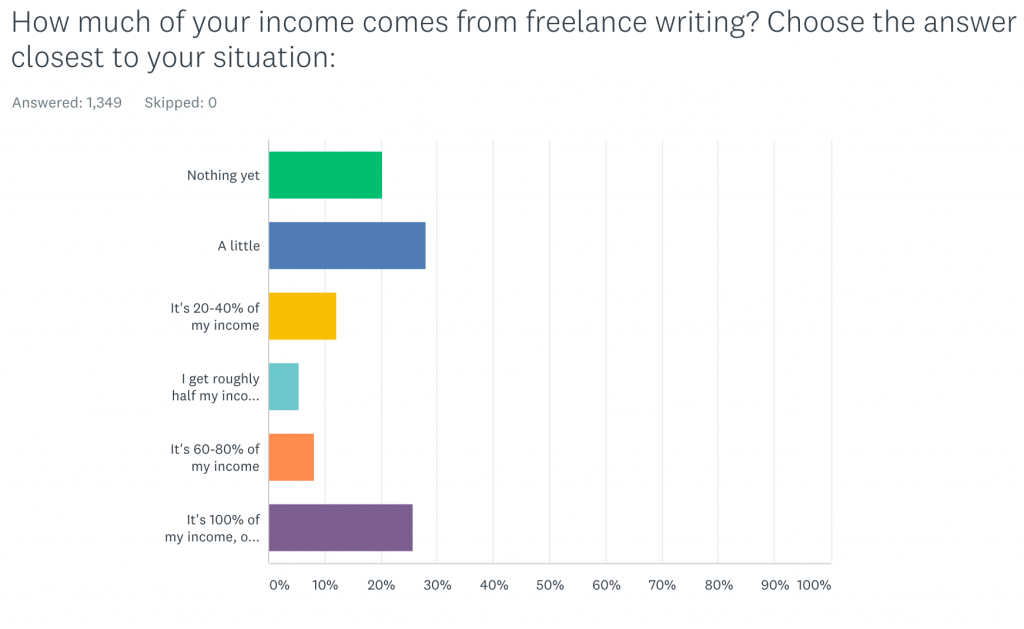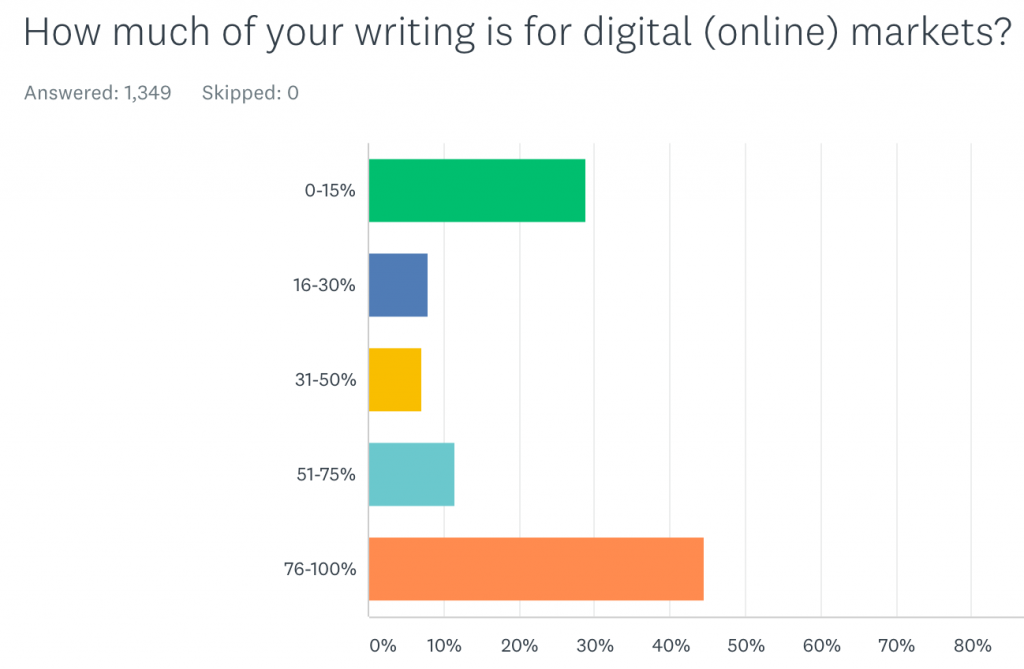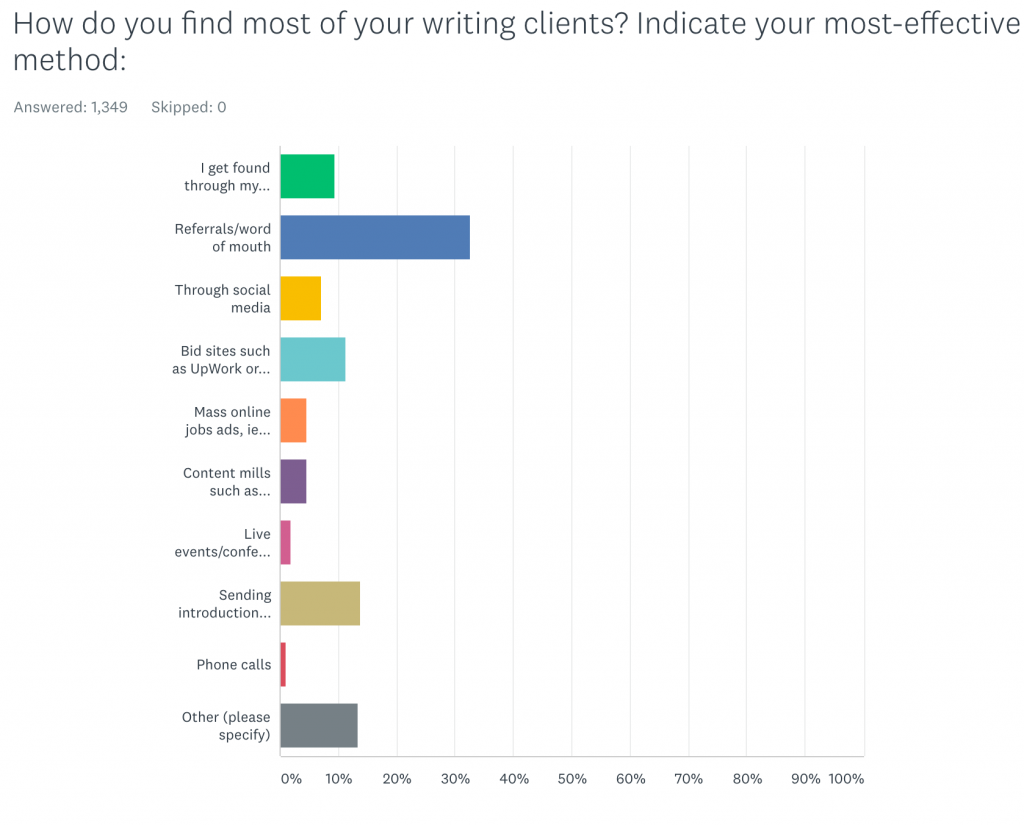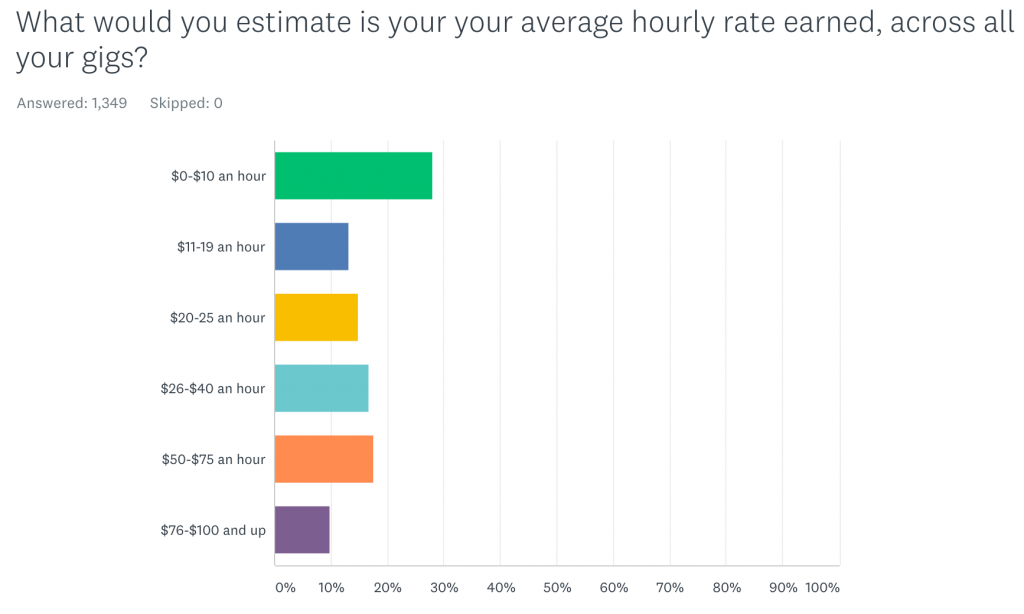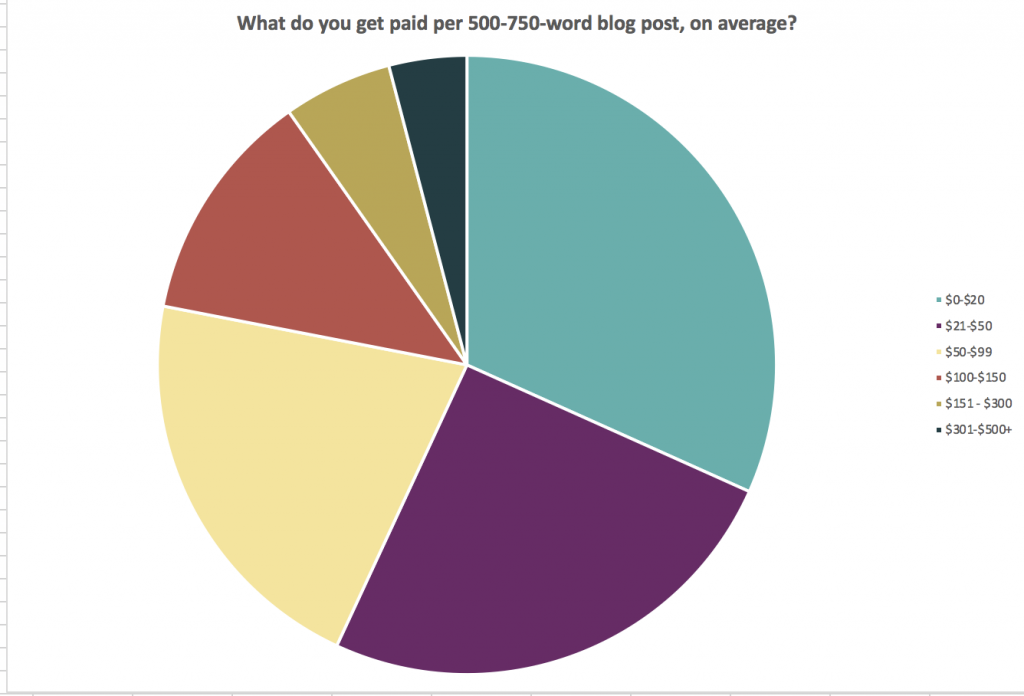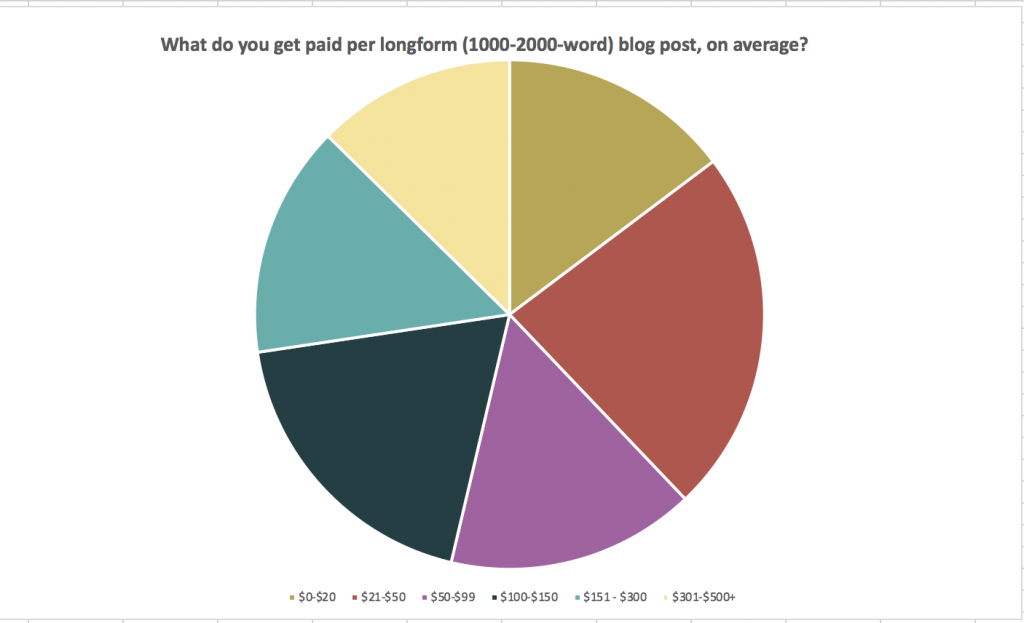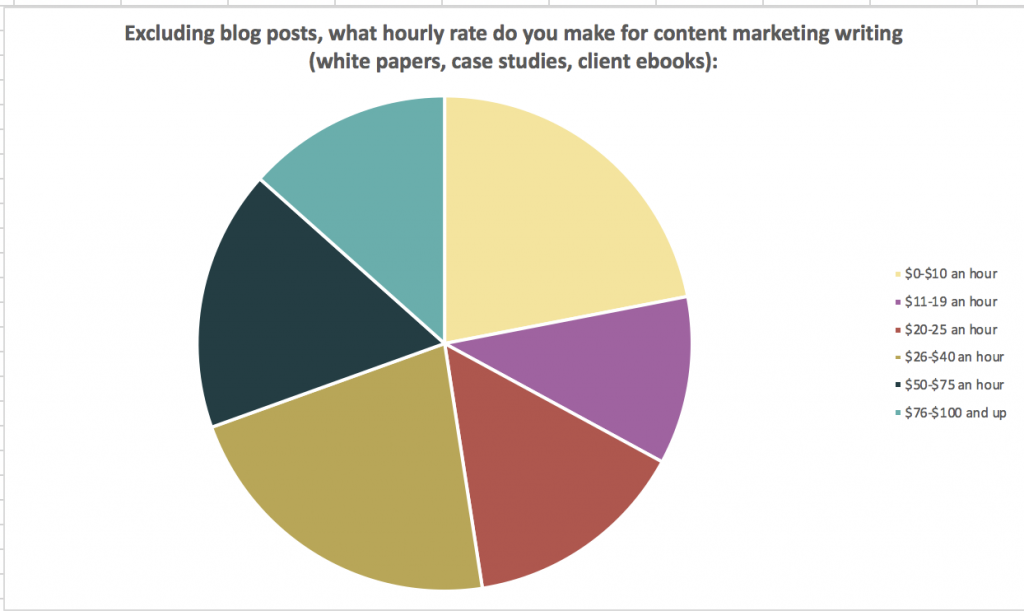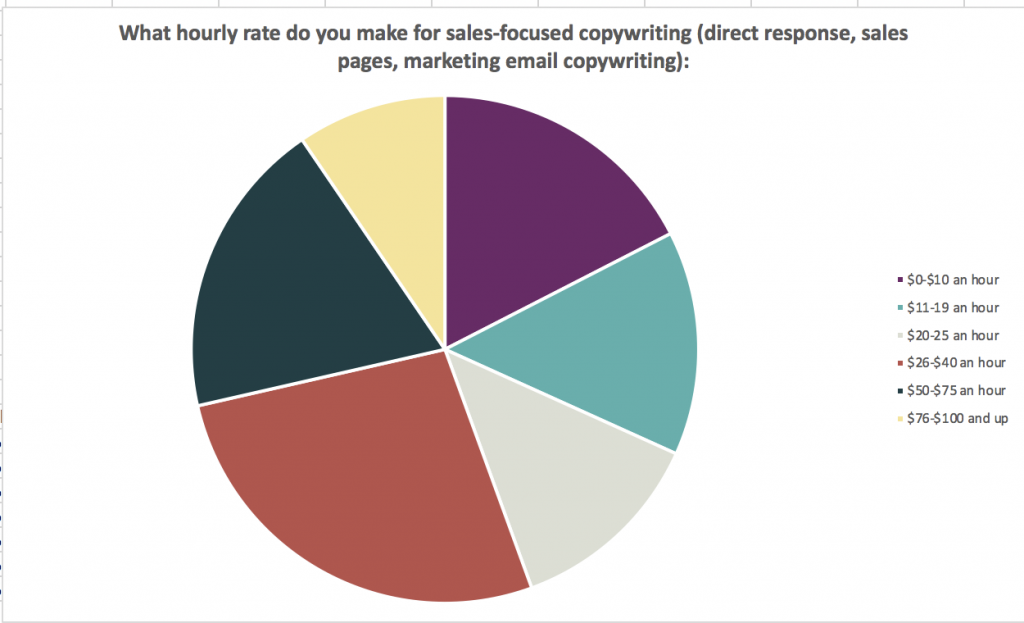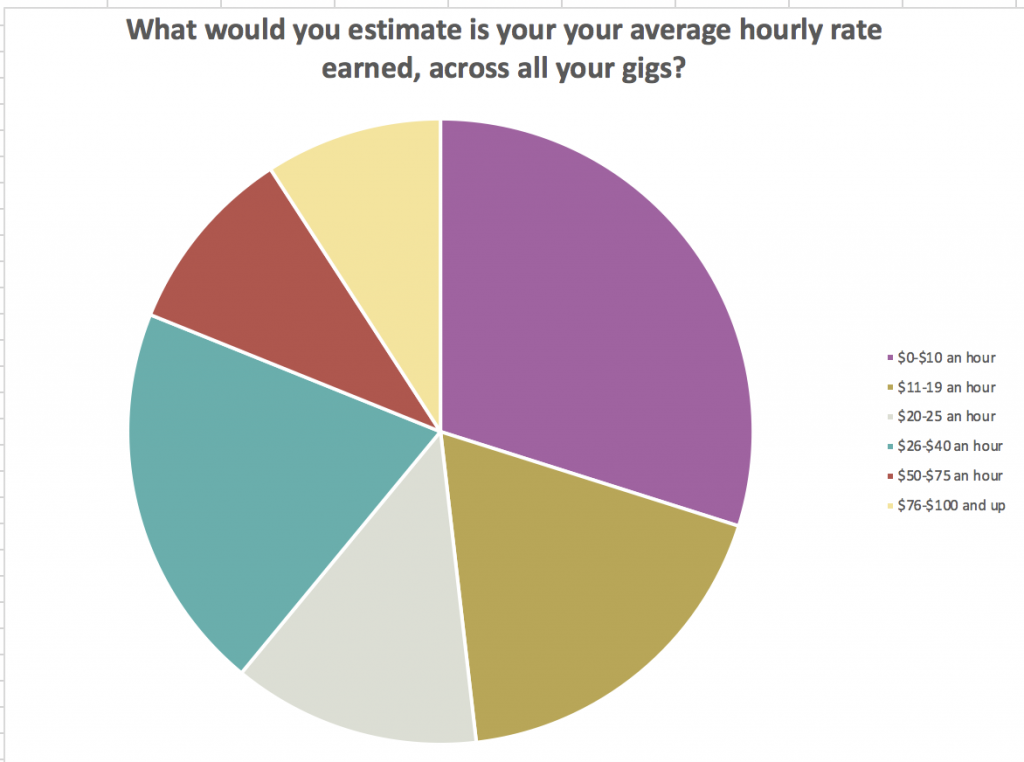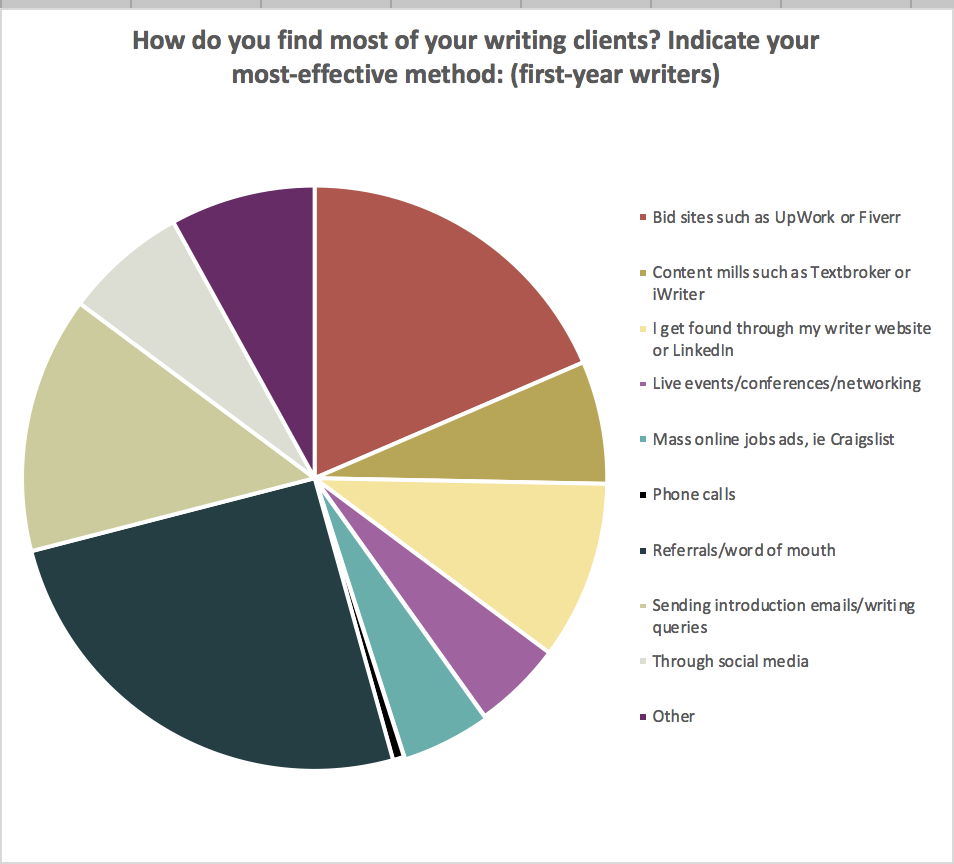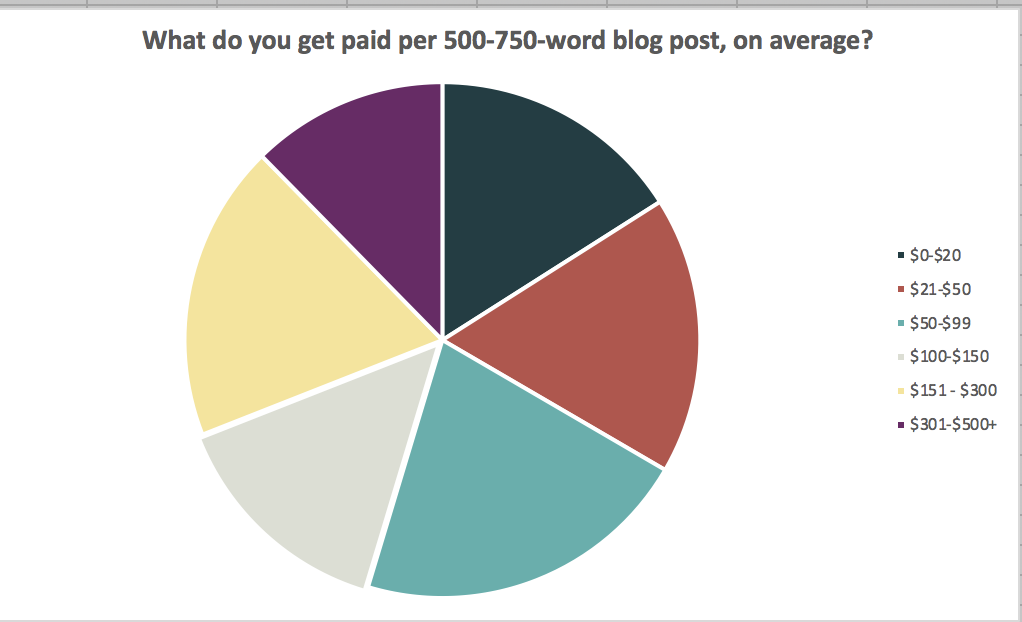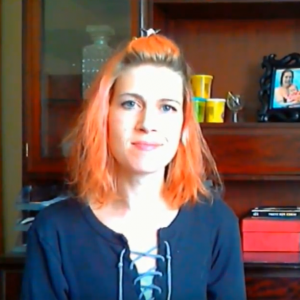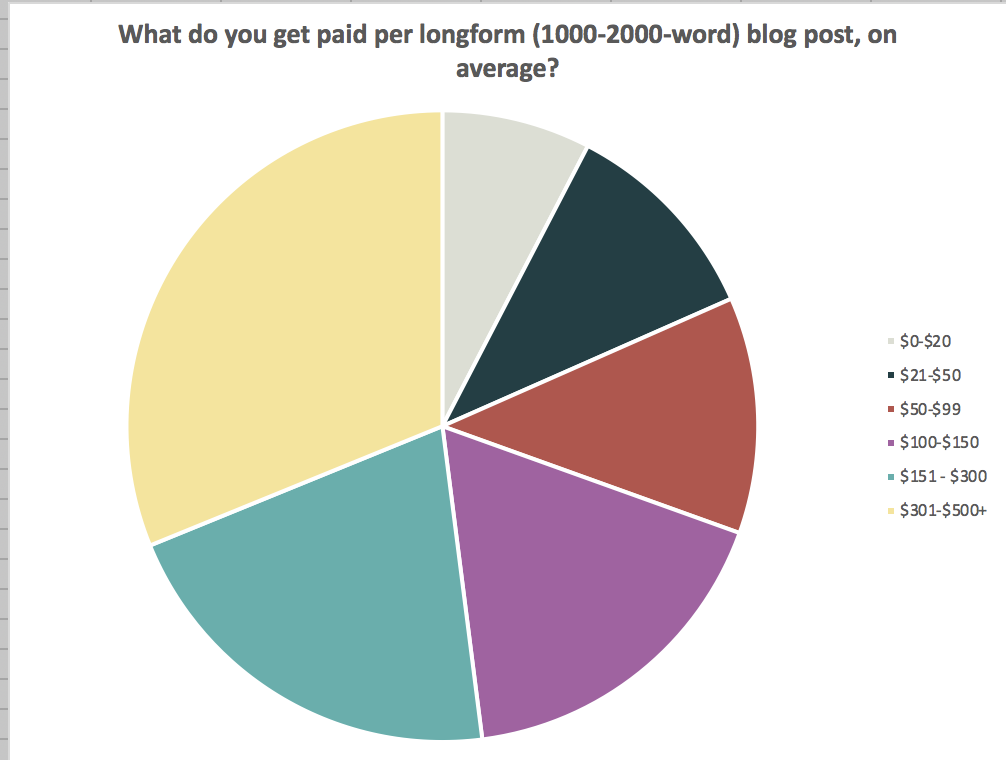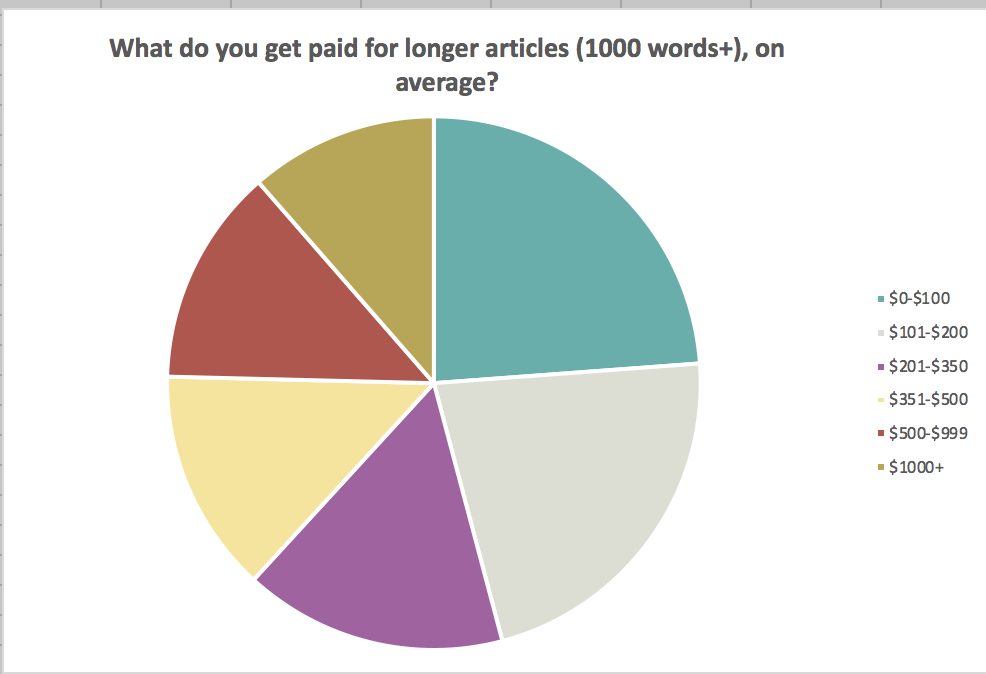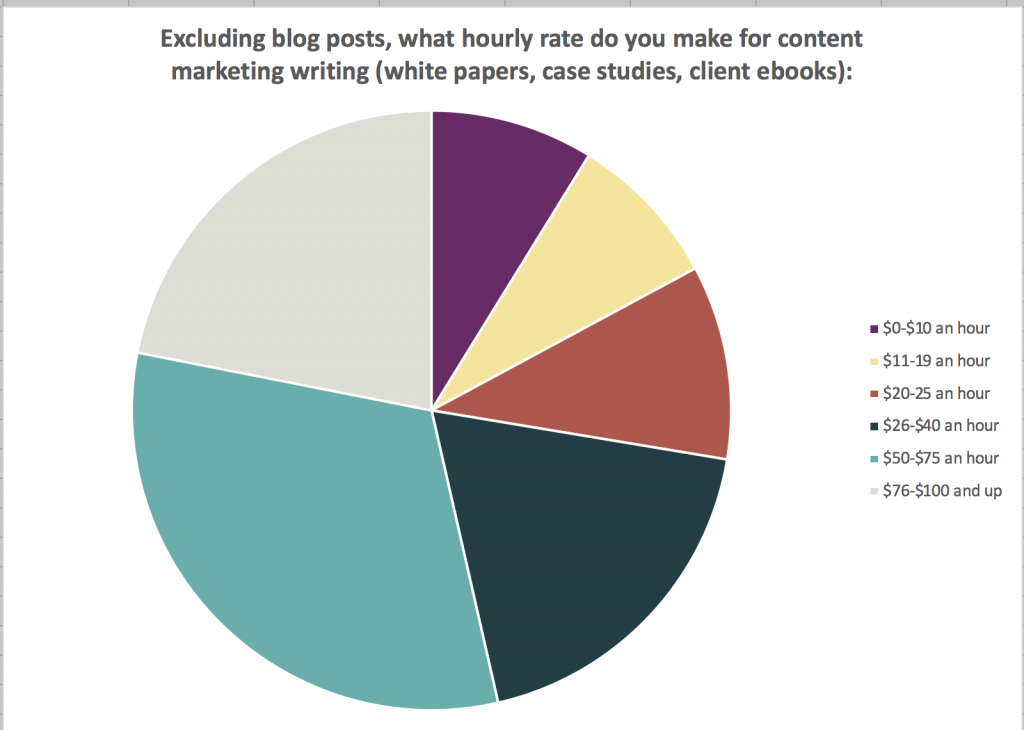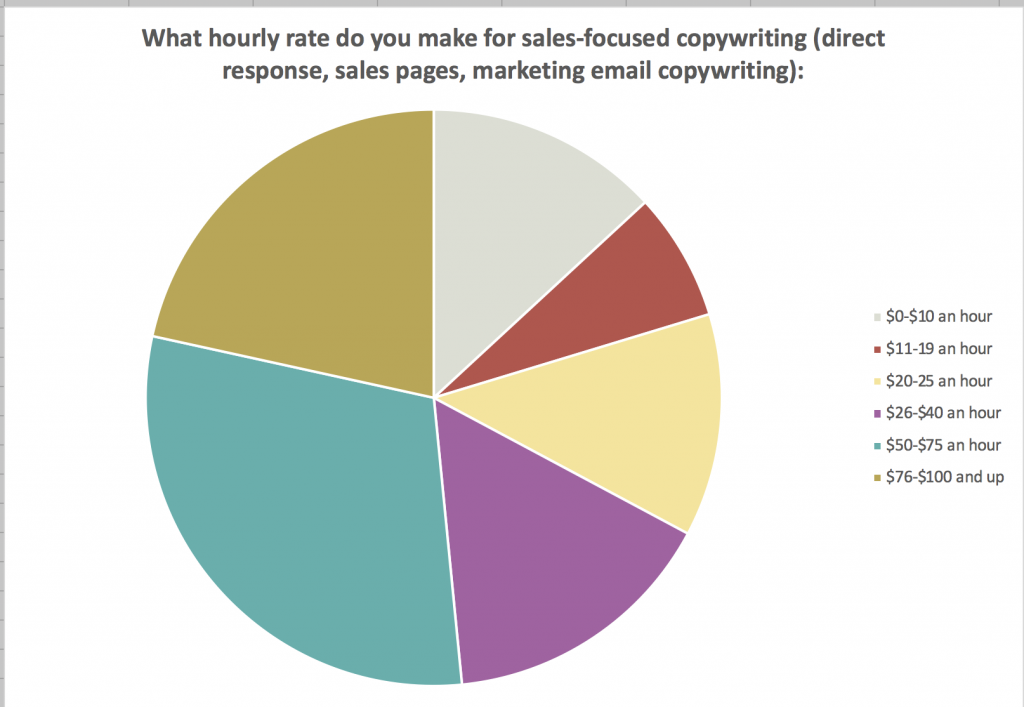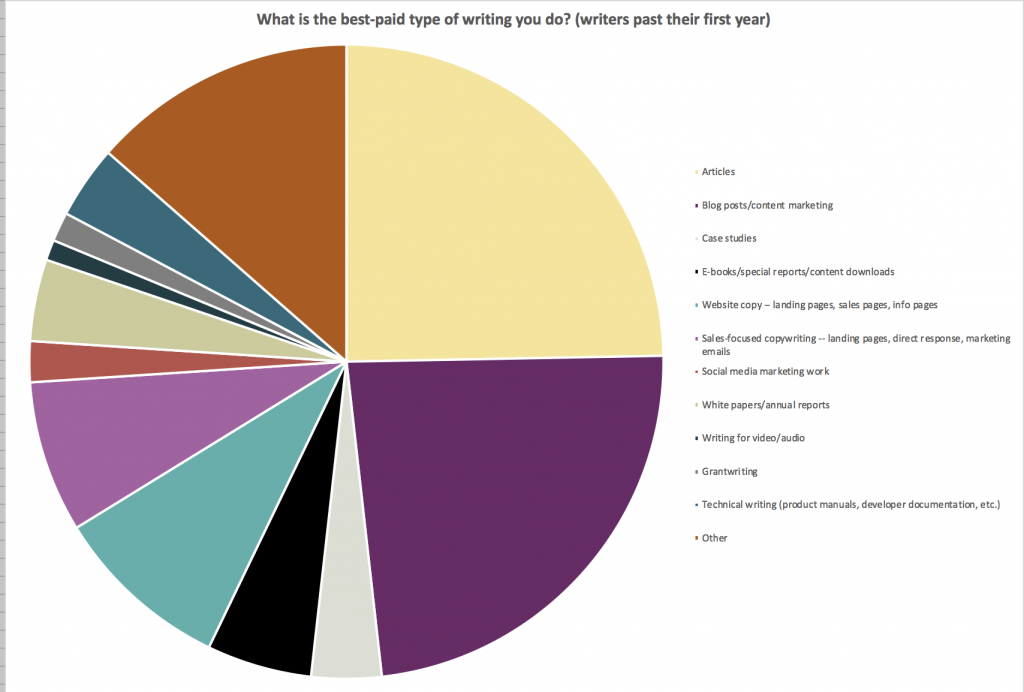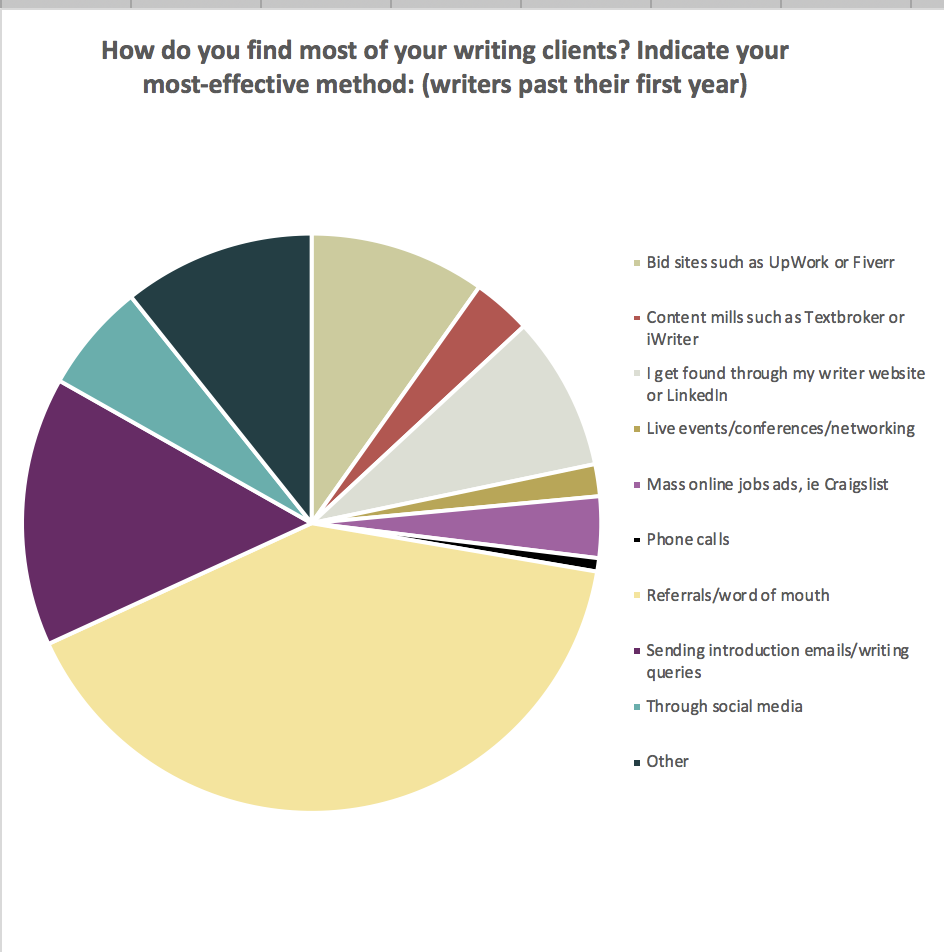
The results contain many interesting surprises. They reveal important changes in the marketplace — and point the way to the types of writing smart freelancers will pursue this year.
But the big takeaway is that rates continue to cover a broad range. Whatever you’re charging, often, you’ll see that a large number of writers are asking for — and getting — more.
To paraphrase The X Files, good pay is out there.
But way too many of you are still earning way too little, for your hard work. No way to gloss over that.
One clarification: I’m not trying to advocate for charging hourly rates. Charge project rates! And know what that works out to for you, as an hourly rate. Because hours are your most precious resource. But for purposes of the survey, since every writing project is different, boiling it down to hourly rates is the only way to compare apples to apples.
To get a better understanding of how writers find clients, what types of writing work are paying well, and what writers earn today, our survey data is displayed below in four groupings. Chart sets below show results for:
- The study as a whole
- New freelance writers in their first year
- More established writers working for 2+ years
- The highest-earning writers — full-timers who stated they earn above $76/hr.
Survey results went out to a handful of trusted experts in a variety of writing-related roles: a writing-craft expert, agency owner, top bloggers, writing coach, and successful freelance writers, too. Their reactions to the data are below as well.
Ready to unpack the numbers? Let’s get started:
Birds-eye view
Before I break out 1-year, experienced, and top-earning freelancers, there are a few key things to know, looking at the entire study and all respondents’ answers. This is what we see from all respondents who report any freelance income:
1. Part-time freelancing is the norm
Many respondents don’t look to freelancing as their main income source, whether they’re retired, home with kids, working a day job, or simply don’t want to write full-time. About 45% said they’re just dabbling in it (earning little or nothing).
On the other end, one-quarter report writing is their full-time income, and it’s more than half of income for another 8% or so (note — we had to start preparing this post before the survey closed, so counts on these initial charts are a hair shy of the total, but percentages are accurate):
2. Online writing dominates
Asked whether they write for print or digitally, online writing is the clear favorite. About 44% said they write primarily online, and only 15% do little online writing.
3. Marketing is a mystery…
A big 46% of writers said they don’t earn more because they don’t know how to find good clients. Other popular responses included lack of confidence they could command higher rates, and lack of negotiating skills.
In other words, many freelance writers operate in mystifying terrain, where they don’t know how to succeed. It’s hard to create a winning marketing strategy when you have no idea who you’re even looking for.
4. …So it’s passive
The fact that so many writers don’t know how to find clients may underlie their reliance on ‘referrals’ as the top source of clients, rather than active marketing. You can see more than three times as many writers get clients through referrals than get inbound leads through LinkedIn or their writer website (the green bar just above ‘referrals’):
Most earn low hourly rates
Referrals are great, if you have a killer network that sends great leads. But it appears most writers don’t have highly useful referral sources. The friends-and-family are not getting you to six figures.
Megan Williams, BlackFreelance.com
Here’s the breakdown on hourly rates all writers reported:
No way to sugarcoat it: nearly one-third of writers report they earn under $20 an hour for their work. NOT a living wage.
But nearly as many earn quite well: 10% report they earn north of $76/hr., and another 17% earn a respectable $50-$75/hr.
One other general note — 37% of respondents said they don’t do article writing, and 47% said they don’t write blogs, so rate figures for each of those categories come from an accordingly smaller pool.
David Leonhardt, owner, THGM Writers
Now, let’s break down how first-year newbies fare as compared to more experienced freelancers, and top-rate writers.
Paid to write: the first year
Often, aspiring freelance writers ask me what their chances are of launching and quickly earning a living at freelance writing. Our 1-year numbers deliver the answers, showing how much writers earn initially, and the percentage of writers who do well rapidly.
Let’s break down the charts for brand-new freelance writers:
Some writers start high
It’s not a shock to learn that in their first year, one-third of writers earn $20 per short blog post or even less (as you can see in the chart below). Many start in very low-paid content mill environments, where that’s a standard paycheck.
(Note: Not all respondents report they do each of the writing types we asked about — so stats below reflect pay reported for those who do these work types.)
Heather Lloyd-Martin, SEOCopywriting.com
But here’s the surprise: Even in year one, many writers earn pro rates. Some 22% earn $100 and up, including 4% who earn north of $300 for short posts. In year one. Nice!
Blogging — a faster track to good pay than articles
Short articles seemed to be more challenging to earn well at off the bat — 73% of newbies got paid $100 or less there. On the upside, 10% earned north of $200 per short article.
Justin Cox, The Writing Cooperative
When you compare longer blog posts and feature articles, it really gets interesting. Longform blogging seems to be a quick route to better pay, as you see here:
Longer posts pay better, faster
Rates for longform vary widely, with a near-even split between the pay categories. Here, 13% of 1-year newbies already earn pro rates from longform — $300 and up. And another 15% earn a respectable $151-$300 per longer post.
By contrast, longer articles seem to be an area where newbies really get exploited. Some 44% of writers still got paid just $100 or less for articles that can hit 2,000 words — not good. Just 4% of newbies earned in the top categories here, pulling in $500+.
Blog posts dominate with new writers
After the stats above, it’s no surprise to see that more 1st-year writers listed blogging as their best-paying writing type (36%) versus article writing (just 19%). A distant third was web-copy projects, with 10%.
Content marketing: the easier path to high rates
When you compare types of writing, sophisticated content marketing work — content strategy, white papers, case studies, client e-books — appears to be a faster track to good pay for newbies than does sales-focused copywriting such as direct-response, email marketing, and sales pages.
Here are the results for content marketing, where 17% of first-years earn $50-$75 per hour, and another 13% make $76/hr and up. That’s 30% of newbies at pro rates! Solid.
Newbies who jumped into sales-focused copywriting work had a bit more difficulty getting good pay — 19% earned $50-$75/hr, and just 10% earned top rates:
On the upside for copywriters, fewer started at the rock-bottom $10-and-under level here than did in content marketing.
Jessica Lawlor, managing editor, The Write Life.
Overall, poverty rates for most (but not all)
Clearly, there’s a distinct minority of new freelance writers who crush it right off the bat. But overall, first-year freelance writing rates are dismal:
To give you the full breakdown on that chart above:
- 30% earn under $10/hr.
- 18% at $11-$19/hr.
- 13% at $20-$25/hr.
- 20% at $26-$40/hr.
- 10% at $50-$75/hr.
- 9% at $76-$100+/hr.
To sum it up in broader strokes, 61% of new freelance writers earn less than $26 an hour. While 39% earn more like a living wage, ranging from $26-$100+/hr.
C. Hope Clark, FundsforWriters
Next, let’s look at one possible reason why many earn so little.
Looking for clients in all the wrong places
What might be at the root of the low-rate epidemic? One reason may lie in newbie’s choices in marketing methods.
As you see above, the most popular answers are referrals (25%) or bid sites such as Upwork or fiverr (19%), with sending pitch letters the runner-up (14%). With the rates most newbies earn, we can assume those referrals largely don’t lead to good-paying clients, and that likely, they need to learn how to write stronger pitches or identify better clients to pitch.
By contrast, just 10% get found through inbound methods such as a writer website or LinkedIn profile. This marketing mix will change as writers mature (see the next section on established writer rates).
Clearly, freelance writing is not an instant road to riches for most. It’s not a surprise, looking at this, that most freelancers aren’t full-time.
But many who put the effort in will see their income grow as they gain experience. For the breakout on that, let’s look at the responses of writers working 2 years and longer.
Better rates for established pros
You’ve seen the slim percentage of first-year writers who earn decent pay. How does the picture change for more experienced writers? Let’s take a look at the data in the same order we reviewed 1st-years’ responses, beginning with short blog posts:
Short blog posts vs articles: and the winner is…
The number of bottom-wage level writers is cut in half. Just 16% of writers are earning $20 a post or less now, compared with 33% in the first year. Nearly half of bloggers cracked $100 a post, and 12% now earn north of $300 per short post, vs just 4% the first year. Improvement!
Short article rates improved as well, but still saw less pay. Half of experienced article writers still earn under $100 per short piece — better than 73% for newbies, but that’s still a lot of poverty pay there. On the high end, better news: the number of writers earning top rates for short articles nearly tripled, to 28%.
Sophie Lizard, BeaFreelanceBlogger
Longform post bonanza
The progress for writers of longer blog posts is even more heartening:
Big improvement here — where just 13% of 1-year newbies earned the top rate of $300 and up, that jumps to 31% by year two. And another 21% earn $151-$300 per longer post, up from 15%.
To sum up, longform blogging looks like one of the quickest paths to decent per-post rates.
Good article pay grows
In long article writing, many writers do move up from the bottom over time — about half as many of our experienced writers earn $100 or less (just one-quarter now, from 44% for newbies).
Bright side: There are big gains on the high end, as nearly one-quarter of 2+ year writers earn $500+ for long articles (up from only 4% the first year).
Content marketing and copywriting = even-steven
It appears that as writers mature, there’s good opportunity in both content marketing and sales-focused copywriting — you can see how similar the two charts are below. Copywriters seem to catch up to content marketers, in terms of earning top rates.
In both cases, there’s a wide spread of rates, but the number of writers earning top rates has grown substantially, compared with the rates of first-year writers:
To recap it, here are the percentages of experienced vs newbie writers earning the top rates ($76-$100+ per hour) in the two categories:
Content marketing – 22% (Newbies, 13%)
Copywriting — 22% (Newbies, 10%)
Final takeaway — over half (54%) of experienced content marketing writers earn at least $50/hr. And 52% of copywriters get at least $50/hr., too. That starts to feel like a ‘going rate,’ at least $50 per hour.
That’s a lotta solid rates for a lotta freelance writers!
Hourly rates overall — lookin’ good
In all, the income picture for experienced writers looks fairly strong. Some 38% earn $50/hr. or more. Another 21% earn $26-$40 per hour, which writers in rural areas or low-cost countries report works just fine for them.
Only 12% of freelance writers remain mired in super-low pay after 2 years, earning $10 per hour or less. Remember that, the next time someone offers you tiny money!
Bamidele Onibalusi, WritersInCharge
What pays best
One likely reason rates are so diverse is that writers are writing different types of projects. With experienced writers, only half are focused on article and blog-post writing. The rest report their best-paid work is in a more sophisticated mix of projects:
As you can see above, it’s about half articles and blog posts earning writers their best pay.
The biggest category is that other half of the writing pie is ‘other’ (14%), which encompasses press releases, proposals, course writing, newsletters, resumes, and more. That’s followed in descending order by website copy, sales copywriting, e-books, white papers, case studies, and technical writing.
Takeaway: More sophisticated types of writing pay as well or better than articles and blog posts. Learn to write other assignment types.
Where the good clients are
You’re probably wondering — what makes the difference? Some experienced writers earn well, others very poorly. My hunch is, it has to do with how they’re marketing and the clients they’re targeting. As writers’ careers mature, their marketing types diversify, as you see here:
Interesting note here: The number of writers relying on referrals is up substantially — likely, because writers have developed more useful networks as they go. Forty percent now count referrals as their top marketing method, up from one-quarter of newbies.
Also notable: The number of writers relying on content mills sinks from 7% for newbies to 3%. Similarly, writers make less use of Upwork and the like, which shrinks from 19% for newbies to 10%. Reliance on mass online job sites such as Craigslist was never big, but it shrinks from 5% with newbies to 3% for more experienced writers.
Takeaway: Many writers quickly realize these three places aren’t going to yield good rates — ever. And they move on.
Sending pitch letters and getting inbound leads remained virtually unchanged at 15% and 10%, respectively.
That’s it for our pay comparison of first-years with more experienced writers!
You’ll see the number of writers relying on content mills, Upwork, and job boards shrink to zero as we analyze our final data set: Top-earning, full-time freelance writers who earn $76-$100+ per hour.
Habits of top-earning freelance writers
How can you earn more, as a freelance writer? By studying the habits of writers who earn $76-$100+ per hour. This was our top rate category in the survey, and roughly 7% of respondents reported that was their average hourly rate. The charts in the infographic below are the responses of these writers only.
Top takeaway: Some well-paid writers still get what appear to be low rates — but they are likely fast writers or have some portion of very high hourly-rate work, to attain that strong average hourly rate. More details below — feel free to share, pin, download, and save for future inspiration:
Top takeaways: run your writing biz right
My own biggest takeaways from this survey:
It’s possible to ramp quickly to high rates…but not common. Only 10% of writers jumped into the top earning category by their second or third year freelancing. For most, it will take longer.
Blog-post rates approach article rates, especially among top payers. They’re not quite there yet…but there’s no denying there is substantial upward movement in blogging rates compared to, say, a decade back, when $50 a post was considered a good rate. Thankfully, no more!
Print is not dead. Take a look at top-earners’ feature article rates! Appears there are still a decent number of $1,000 article assignments out there.
You could earn more for the same work. If you’re doing short blog posts or articles for $20, know that many others are getting $300 for those, and more. The same is true in every writing type. Learn how to find better-caliber clients who understand the value of what you deliver!
Time to shake up your marketing. You’re relying on your network — but for most writers, it isn’t delivering quality clients. Make new connections, if that’s you. Better yet, diversify how you market and be more proactive about targeting the clients you want, rather than living off whatever flows in the door.
Consider starting strong. While most writers flounder, a distinct minority earn well from the start. We’ll need to dig further to find out what makes that difference — if I had to bet, my money’s on writers with experience, or at least the savvy to join a writer community where they can learn best practices and get support.
Key point: It appears being a greenhorn does not mean you can only get tiny money. Consider simply charging pro rates from the start.
Move up from articles and blog posts. Even though articles and blog posts clearly aren’t the best-paying writing types out there, most writers said they planned to pursue more of same. Instead, learn new skills and move up to better writing jobs.
Earning well is not a fluke. I meet many writers who think few freelancers earn enough to live on — or that really, no one pays their bills with freelance writing. This data refutes that notion.
A substantial portion of experienced freelance writers earn top rates. So track your time, and drive your business toward earning north of $75 per hour. As I said at the top, good pay is out there.
I plan to repeat this study again next year, so we can get comparative data and see how rates are trending. Here’s to asking for higher rates in the coming year!
What’s your reaction to the survey data? Leave a comment and let’s discuss.







